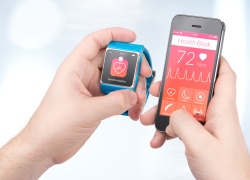
With the attention that healthcare is receiving in the present time, multitudes of mobile applications are coming up ranging from typical wellness applications to serious compliance based applications that can help doctors access medical records.
While embracing this current trend, it is imperative that the applications are designed towards a genuine healthcare need and follow various best practices in implementation. Following up on this, the blog is aimed to discuss the basic Why, What and How of mHealth applications.
Why?
Mobile applications are around for quite some time now. In fact, we cannot imagine a world without instant connectivity that the smart phones provide us. The mobile nature of applications provides us with the following inherent advantages:
- Constant connectivity: Easy access and constant connectivity with medical records and physicians as well as educated inferences with self diagnostic
- Lower costs: Availability of the application across multiple platforms at affordable costs results in reduction of overall expenses of primary (self) diagnostics in comparison to them being performed at the medical center
- Wider reach: Provision of mHealth benefits to the far reaching population due to the widespread availaibility of mobile devices across the globe
In addition, following indirect benefits can be incurred:
- Potential to improve patient care quality and overall efficiency of the doctor. This results in possible reduction of healthcare cost.
- Reduction in hospital readmission instances due to self diagnosing applications
- Help in managing chronic conditions. The constant connectivity ensures to reduce the number of visits to the hospital.
- Improvement in patient knowledge and awareness of the medical conditions that they are suffering from as well as feeling a sense of control and satisfaction in the overall diagnostic process
What?
It can be safely said that the most popular mHealth applications are one of the following types:
- Health and Wellness applications
- Applications interfacing with medical devices: These types of applications include interfacing with devices like pill bottles, blood pressure meter, etc. The communication channels can be established through Bluetooth or wireless connectivity.
- Compliance-as-a-Service applications: These applications provide HIPAA based communication channels for doctors to access patient information
- Education Applications: These applications attempt in enhancing the medical knowhow of patients
- Surveys and Feedback: These applications help patients in providing real time quick feedback about the overall medical care that they have received. This contributes towards overall quality control.
How?
For better results, these applications need to be developed by following the below listed best practices for imlementation:
-
- Platform
- Multiple platforms and standards are developed that promise standardization and easy information sharing. One such platform is provided by Open mHealth.
- Data can be available in plug-and play mode
-
- Compliance
- If the application requires HIPAA and HITEC compliance, they need the following:
- Data encryption at every point
- Use of HIPAA compliant email solution
- Keep health information out of notification
- Use of pass code
- FDA certification – For following types of applications, FDA review and approval is necessary:
- If the applications are intended to be used as an accessory to a regulated medical device, or
- If the application transforms a mobile platform into a regulated medical device
However, reevaluation for minor changes is not necessary for such applications. For all other applications such review may not be needed.
-
- Privacy and Security: Following techniques can be used to ensure security of the application:
- Use of Encryption
- Data transmission with SSL / HTTPS
- Remote wipe off
- Limited logging and caching on device with proper session handling
- Access Control with Principle of Least Privilege
- Multi –factored authentication
-
- Certification
- Multiple authorities are available to provide certification for the application
Best Usability Practices
In addition to implementation practices, the application needs to follow the following usability practices:
-
- Create the application to fit easily in daily routine
- Present information from reliable source
- Personalization of content
- Follow typical mobile application development guidelines which include:
- Easy use of screen real estate
- Limited and useful content
- Attention Economy
- Ensure maximum usability for targeted workflow and impart information towards the intended Audiences
- Efforts towards maximum adaptation of the application both by medical professionals as well as patients. This can be in the form of incentives to doctors for using such applications.
These are some of the basic details to be considered during the application development. All these details along with more guidance will surely help to create a successful and useful mHealth application.






